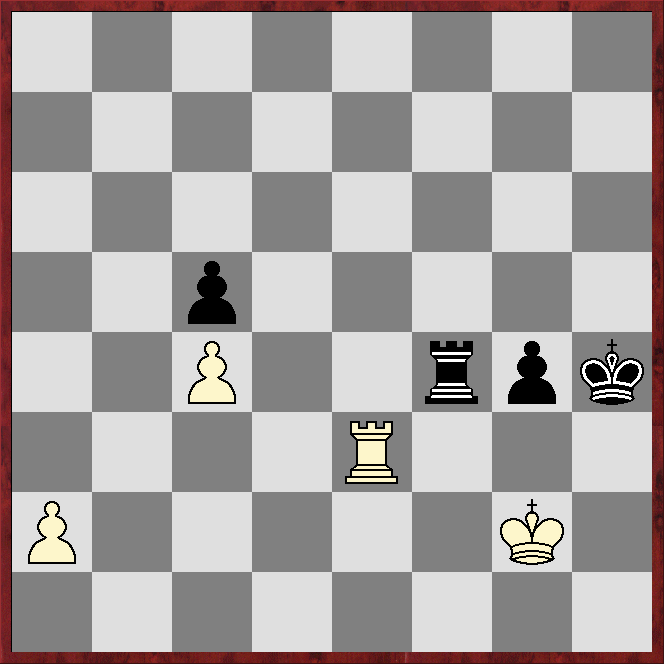But while the saying "all rook endgames are drawn" may have a lot of truth in it, such endings are often far-from-easy to play over the board without an engine to consult.
Nataša Richterová (2170) - Spanton (1771)
*****
*****
*****
*****
White has the only passed pawn, and it is a farside one that effectively can only be stopped by the black rook. However the black king is more active than its counterpart, and Black can create a passer of his own with 54...h4 55.gxh4+ Kxh4, when the position is completely equal, according to Stockfish15 and Komodo13.02.
White's plan should be to push the a pawn, and the obvious way to do this is 56.a4. However the game saw 56.Re3!?, which is just as good, according to Stockfish15, although Komodo13.02 now gives Black a slight edge.
After 56...Rf4 White has only one good move.
*****
*****
*****
*****
57.Rc3?
The biggest sin in rook-and-pawn endings is passive play with a rook. At first glance it might be thought the text is forced, but after 57...Rd4 58.Rc2 Rd3 59.Kh2 Ra3 White is in trouble.
So White should look for an alternative to Rc3, and the obvious move is 57.a4!?, meeting 57...Rxc4 with 58.Ra3, which the Syzygy endgame tablebase confirms is a draw.
After 59...Ra3 the game continued 60.Kg2, with NR offering a draw while I considered my reply.
The further moves 60...Ra4 61.Kh2 g3+ 62.Kg2 Kg4 63.Kg1 (the white rook is not only passive but, for obvious reasons, cannot move) Kf3 64.Rc3+ led to the following position.
*****
*****
*****
*****
64...Kf4?
This allows 65.a3, after which White is out of trouble. I played on with 65...Ke4 66.Rxg3 Rxc4 67.Kf2 Rc2+ 68.Ke1 Ra2, but after 69.Kd1 the white king was in position to stop the c pawn and, although I tried for tricks, the game was drawn.
Correct in the last diagram is 64...Ke2, the point being that after 65.Rxg3 Rxc4 the black king can stop the white king reaching the queenside, whereupon the c pawn is much more dangerous than the a pawn as the former is much nearer its queening square. Best-play, according to Syzygy, continues something like 66.Rg2+ Kf3!? (66...Kd1 also wins) 67.Rf2+ Ke3 68.Rb2 Rb4 69.Rc2 c4 70.Rc1 Kd2 71.Ra1 c3 etc.
My mistake was to underestimate the speed with which the white king could reach c1 and so obtain a draw. If I had remembered that, in the classic endgame of rook-and-pawn versus rook, the key to the result is often which king can reach the queening square, 64..Ke2 would have cried out for serious consideration.



No comments:
Post a Comment